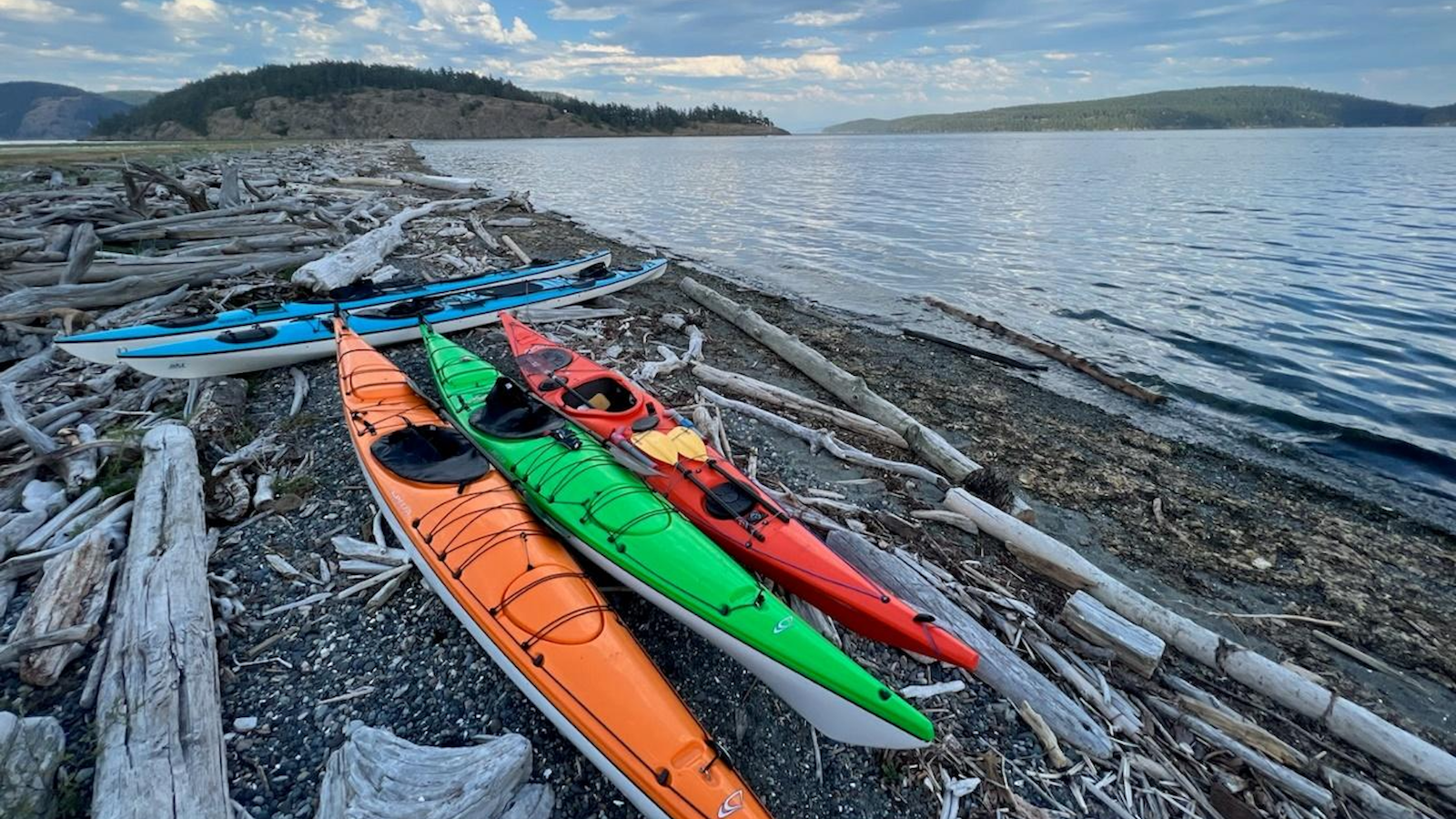Megan Schorr’s mahogany eyes peer out to the Salish Sea—diminutive counterpoints to the countless diamonds that dance atop the saltwater. She has taken in this view for nearly all her adult life and still swells with gratitude daily—not only for the natural beauty she is surrounded by, but for the life she has created for herself and her family.
Schorr and her husband, Erik, are about to celebrate their 20th season guiding guests by sea kayak through the San Juan Islands in northwest Washington State. Their company, Anacortes Kayak Tours (AKT), has made connecting with the natural world possible for novices and experienced paddlers alike in this uniquely beautiful and dynamic marine environment.

Sea kayaks on the beach in the San Juan Islands. Courtesy of Megan Schorr
Living the dream
The seed of this idea was planted 25 years ago when the pair was living on San Juan Island. Schorr had been working as a naturalist on a whale watching boat and as a sea kayak guide, while Erik was captaining a whale watch boat for another outfitter. The two worked hard during the summers and traveled the world during the winters. Admittedly, “It was an idyllic life,” Schorr says.
While on one of their biggest adventures, a five-month stint in Antarctica working for the United States Antarctic Program, they decided to move forward with their longtime dream of starting a sea kayak touring company.
Upon their return to Washington, they settled in the community of Anacortes—the homeport to the San Juan Islands. Here they endeavored to launch their business.
Washington State operates the largest ferry system in the United States. Several of these ferries service the San Juan Islands.
Within San Juan County, Washington, there are more than 170 islands in the archipelago—some no more than a sparse collection of rocks fighting to keep their heads above water at high tide.
The state ferry system services four of the larger islands that maintain a significant population and have long been a draw for tourists.
In addition to their professional experience, passion for the outdoors and commitment to an excellent customer experience, the Schorrs knew they could offer something unique to their guests—a kayaking experience in the islands without the hassle of navigating the ferries.

Beach camping on one of AKTs multi-day trips. Courtesy of Megan Schorr
Their first season was more successful than they had hoped for, and they haven’t looked back since.
Since their inception, they have expanded to include tours for families, multi-day excursions featuring exceptional local culinary offerings and sunset bioluminescent tours.
After many years of working with the training outfitter Body Boat Blade—in training their own guides with the highest skill and safety standards—the Schorrs had the opportunity to purchase the company.
Its acquisition has enabled them to help more people to get out on the water safely, by continuing its founding mission of specializing in high-quality instruction for paddlers of any skill level. For this endeavor, they have partnered with one of their former guides who heads coaching and instruction for the company.
Schorr credits her husband Erik with the out of the box thinking that has kept them innovating and evolving over the decades.
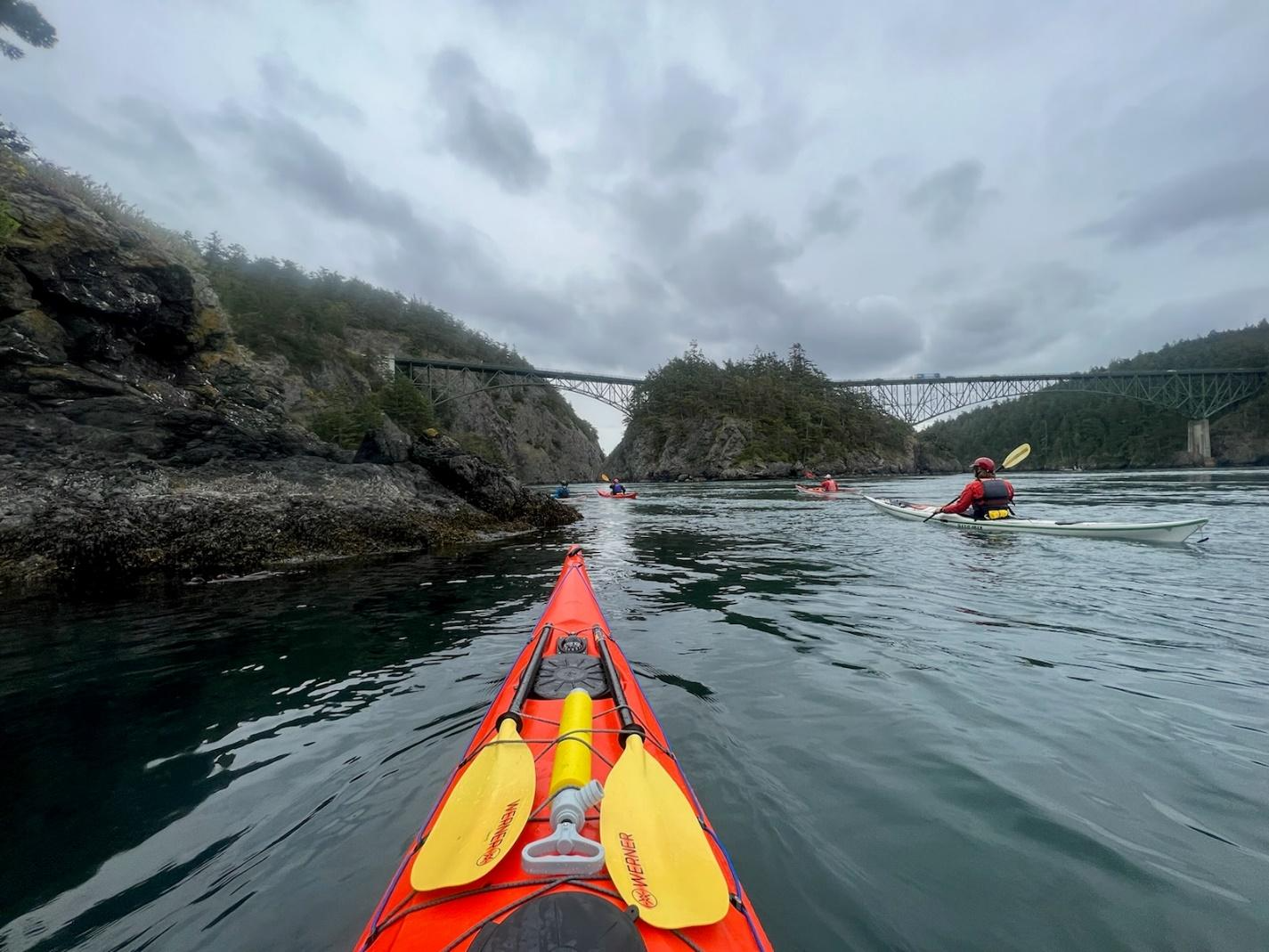
Sea kayakers paddling toward the Deception Pass bridge. Courtesy of Megan Schorr
Living their values
While expanded offerings have been important for their livelihood, the Schorrs have always kept environmental stewardship at the forefront of their business model. “Our land ethic is built into our daily life,” Schorr said.
In addition to practicing Leave No Trace ethics, they volunteer significant personal time to beach cleanup and trail maintenance in the area.
They are also committed to engaging in responsible wildlife viewing, something that is especially dear to their hearts.
While sea kayaking is environmentally low-impact on nature, Schorr recognizes where impacts could be felt. “Our guides are instructed to know how best to give wildlife enough space so as not to interrupt their activities,” she said. “We seasonally avoid known bird nesting areas altogether, simply as a safety precaution.”
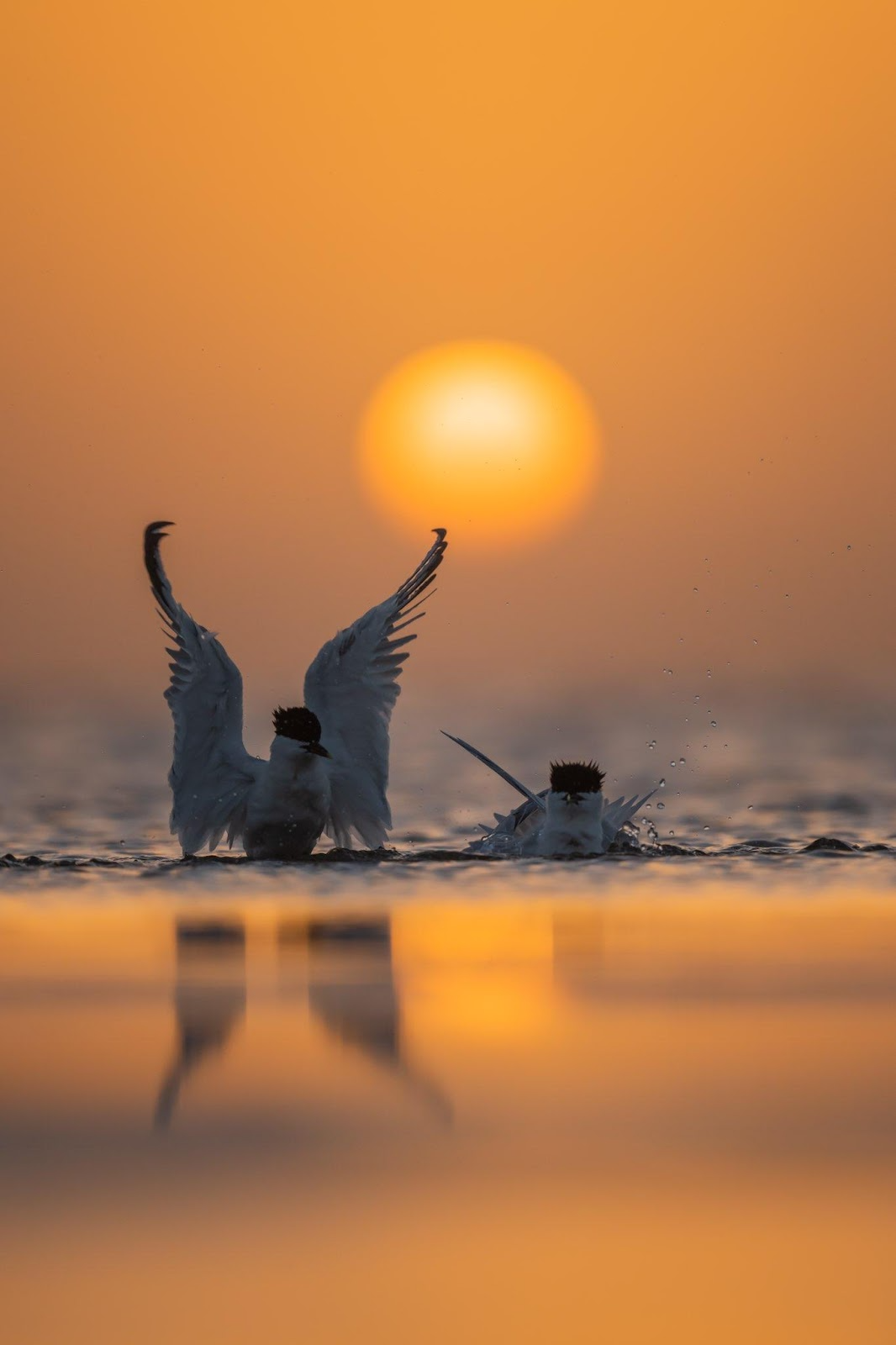
Sandwich Terns | Photo by Tashi Schorr
Getting outside to directly connect with nature is a pillar that Schorr’s life and business are built upon. She recognizes how fortunate she is to be able to get out on the water or into the woods regularly and loves sharing this opportunity with those for whom it is a foreign activity, especially city kids, saying, “I love getting school groups out…and to see the awe and wonder that some find in viewing nature.”
She firmly believes that “If you can connect people with nature, they’re going to be more of an advocate to help protect it.”
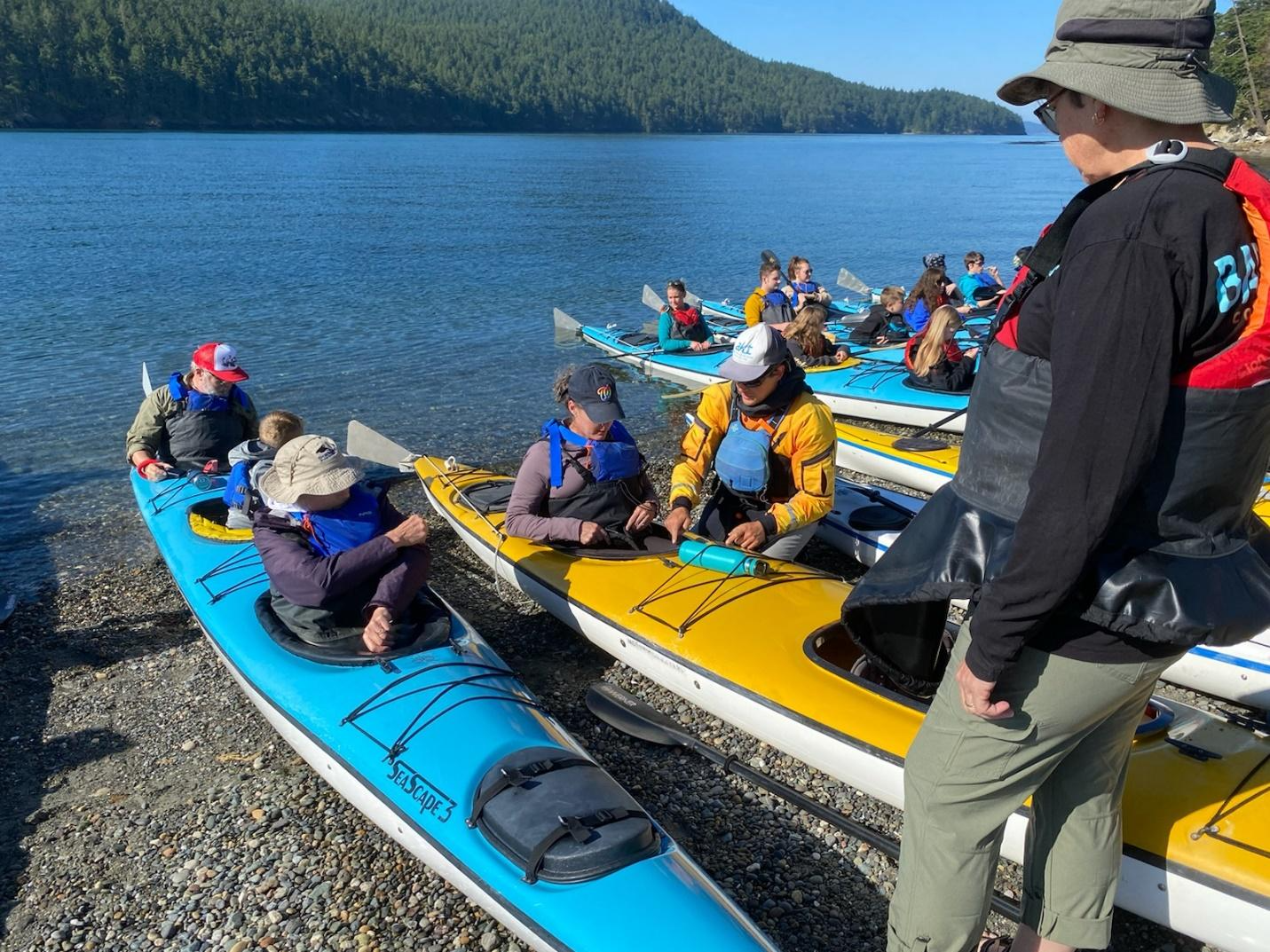
An AKT guide helps a kayak tour prepare to launch. Courtesy of Megan Schorr
While these actions ripple out to contribute to positive change, their motivations begin at home. Schorr reflects, “Our sons are growing up in this environment and we’d like to be assured that they come of age in a healthy place.”
Movement is another pillar her life is built upon and is something she views as being more relevant now than ever, in this increasingly plugged-in world.
In addition to being an avid paddler and hiker she has completed multiple 50K races and marathons—including a marathon she ran during their stint in Antarctica.
“I think motion is lotion and you just gotta keep on moving. Inactivity breeds inactivity,” she said.
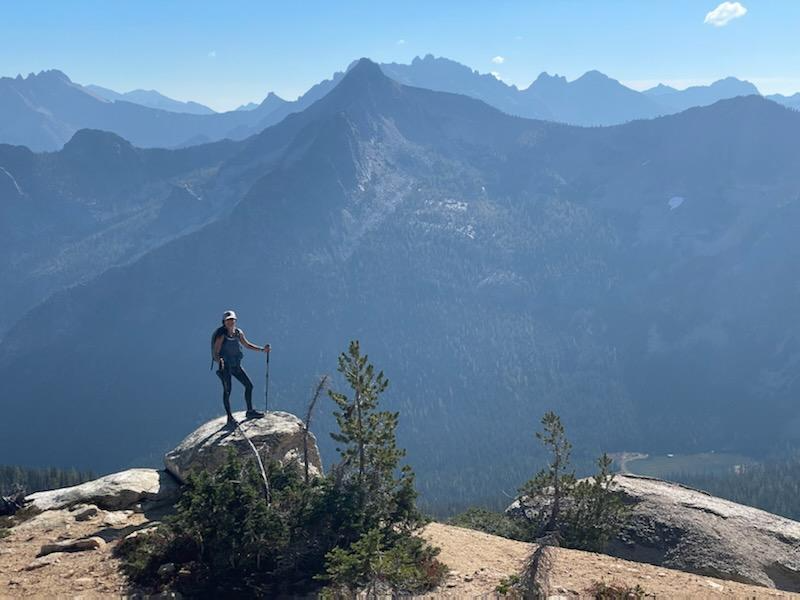
Schorr summiting a mountain. Courtesy of Megan Schorr
Family tradition
With the close of their inaugural season came the birth of the Schorrs’ first son, Taiga. Every year since then, the family has packed up at the end of the season and hit the wilderness, often spending Autumnal stints in the desert. As Schorr quips, “We go to Canyonlands, not Disneyland.”
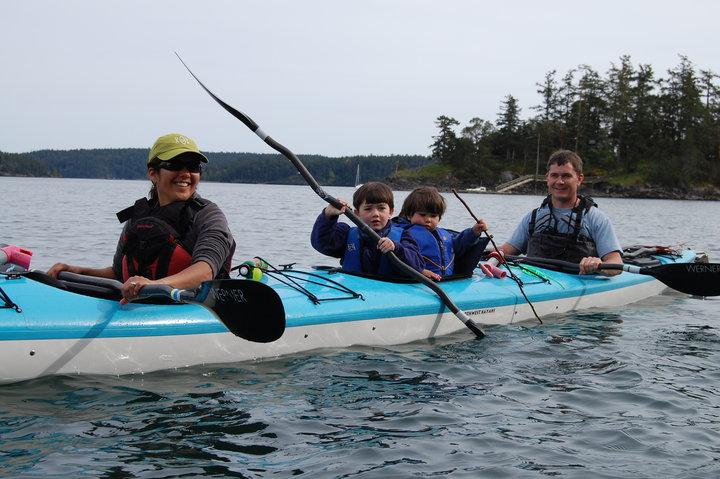
The Schorrs on a family sea-kayaking trip. Courtesy of Megan Schorr
Outdoor activities are woven into family life, with each member finding their own special niche. Taiga will begin guiding kayak trips in the 2023 season. Their youngest son, Tashi, has become an avid birder—a passion that he shares with his father.
His love of birdwatching has dovetailed into photography, a skill he began honing when he was just 12 years old. It began when his father gave him a spotting scope. He soon began taking pictures through it but found it cumbersome.
He then graduated to using his father’s camera before upgrading to his own, purchased from a family friend.
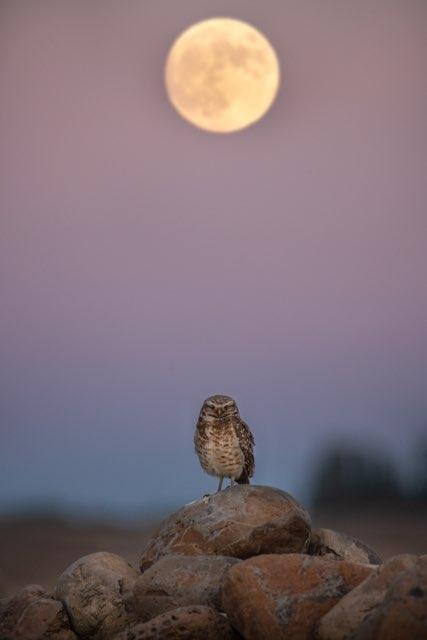
Burrowing owl | Photo by Tashi Schorr
Tashi’s deep love of the outdoors and instinct for storytelling through his photographs have translated into a rapidly advancing skillset, one that has garnered him a dedicated Instagram following and many admiring customers at local art fairs.
His commitment to his craft shines through his photographs. What viewers don’t see are the mornings he wakes up to shoot at 4 a.m., or the times he steels himself against the elements, waiting for the perfect shot to reveal itself.
Regardless of early wake-up calls or conditions, he finds serenity in the process. “It's a very peaceful thing to be out alone … there's something [special] about being in connection with birds,” he said.
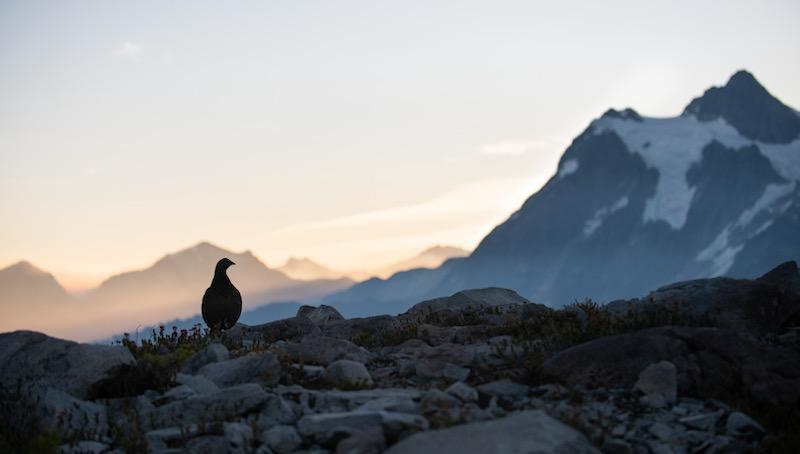
Sooty Grouse | Photo by Tashi Schorr
When asked what has most contributed to his artistic evolution, he said, “Getting outside and taking photos as much as I can. I also have a community of wildlife photographers that are really helpful.”
While Tashi has found peace in nature through bird-watching, he has also caught Schorr’s passion for movement. Mother and son completed a 50K together at Tashi’s prompting, and he competed in a Ragnar this summer with friends.
Ragnar is a 120-mile race, run around the clock on wilderness trails, by a relay team of eight.
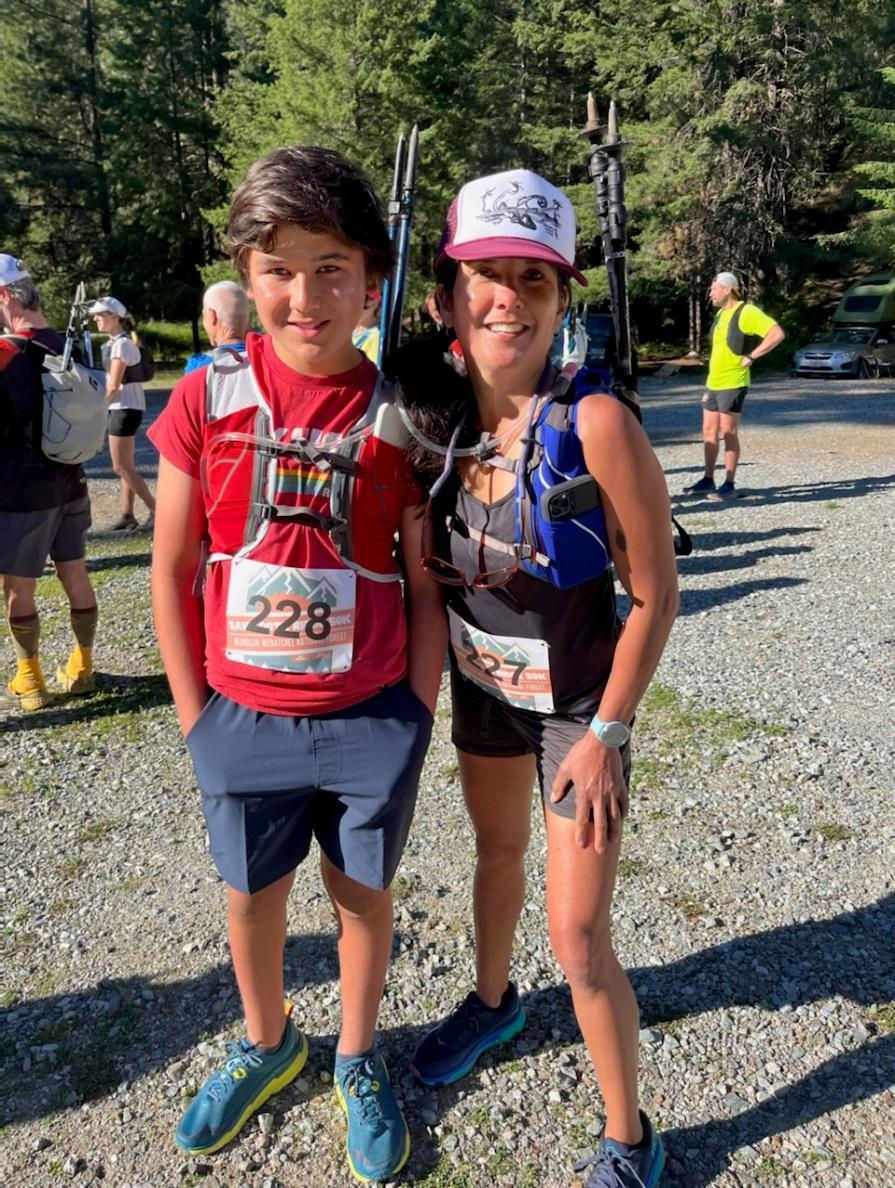
Tashi and Megan Schorr competing in a 50K race together. Courtesy of Megan Schorr
The family’s love of the natural world has led them to explore as much of it as they possibly can. Their goal—to hit every continent. Collectively they’ve hit six thus far.
Schorr’s first international trip was a five-month stint in Australia with a friend, shortly after graduating college, followed by a month of hitchhiking around New Zealand.
While her hitchhiking days may be largely behind her, traveling is still at the top of Schorr’s priority list. Next up, a family trip to Africa this winter.
The wild side
Though each new place they travel brings unique wonders, the love of their homeland continues to hold its shine. “I could give you a million reasons why I love the San Juan Islands, but one thing that makes this place really special is the wide array of wildlife,” said Schorr.
She attributes this, in part, to the deep waterways in the area and the huge tidal exchanges that occur daily. This dramatic movement stirs up food that nourishes the varied wildlife populations in the area.
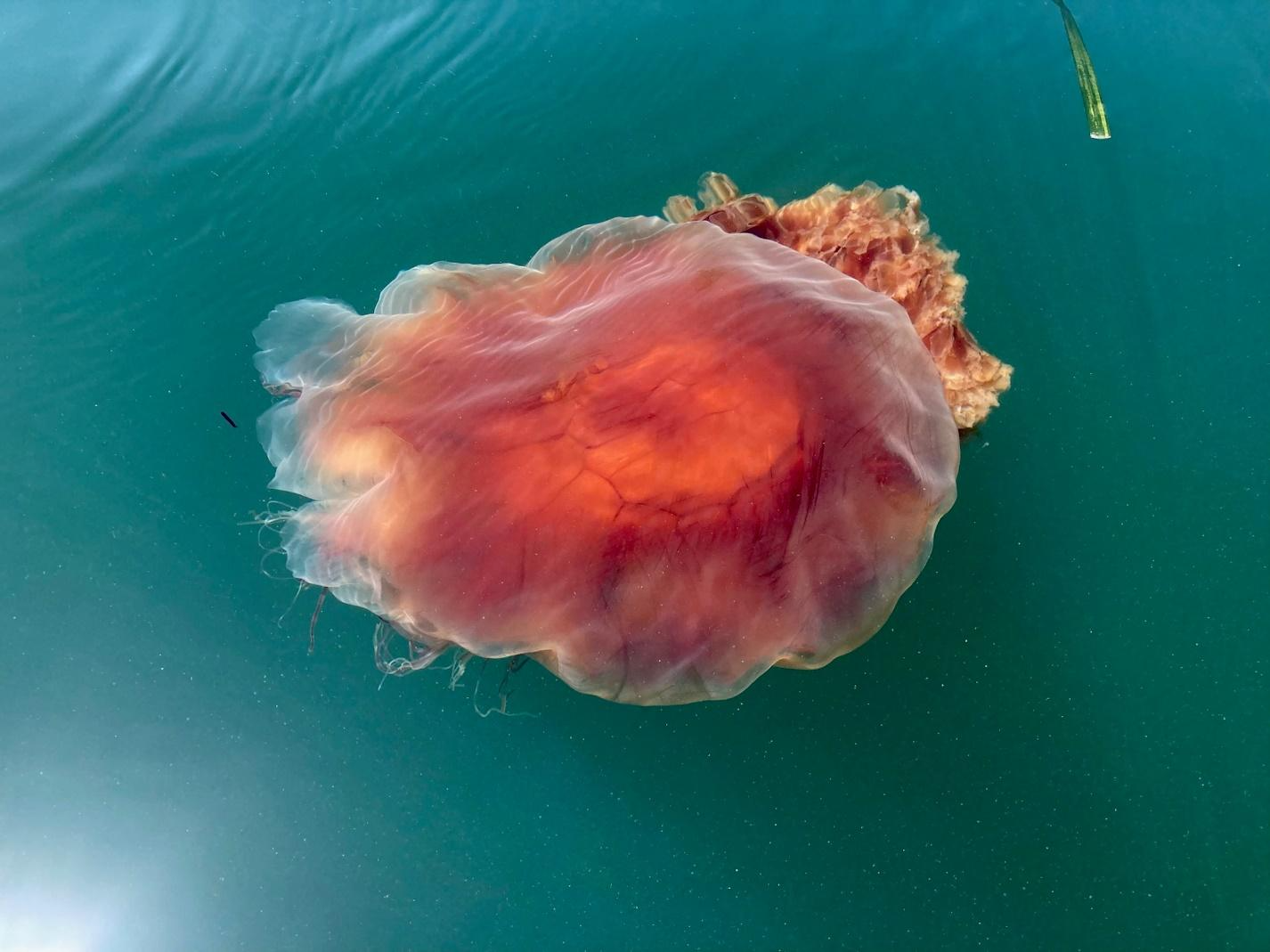
Lion’s mane jellyfish. Courtesy of Megan Schorr
On one end of the spectrum is the megafauna that’s easy for everyone to get excited about. The area is home to porpoises, sea lions, elephant seals and harbor seals.
Some elephant seals that frequent certain areas are even known by name to locals.
Last year, a baby elephant seal was born on the beach at Bowman Bay, where some of AKT’s trips depart from. The beach closed for much of the summer as elephant seals remain on land for quite some time after they are born.
While perhaps an inconvenience in a business sense, it made Schorr happy to see how the animals were rallied around and their needs were honored.
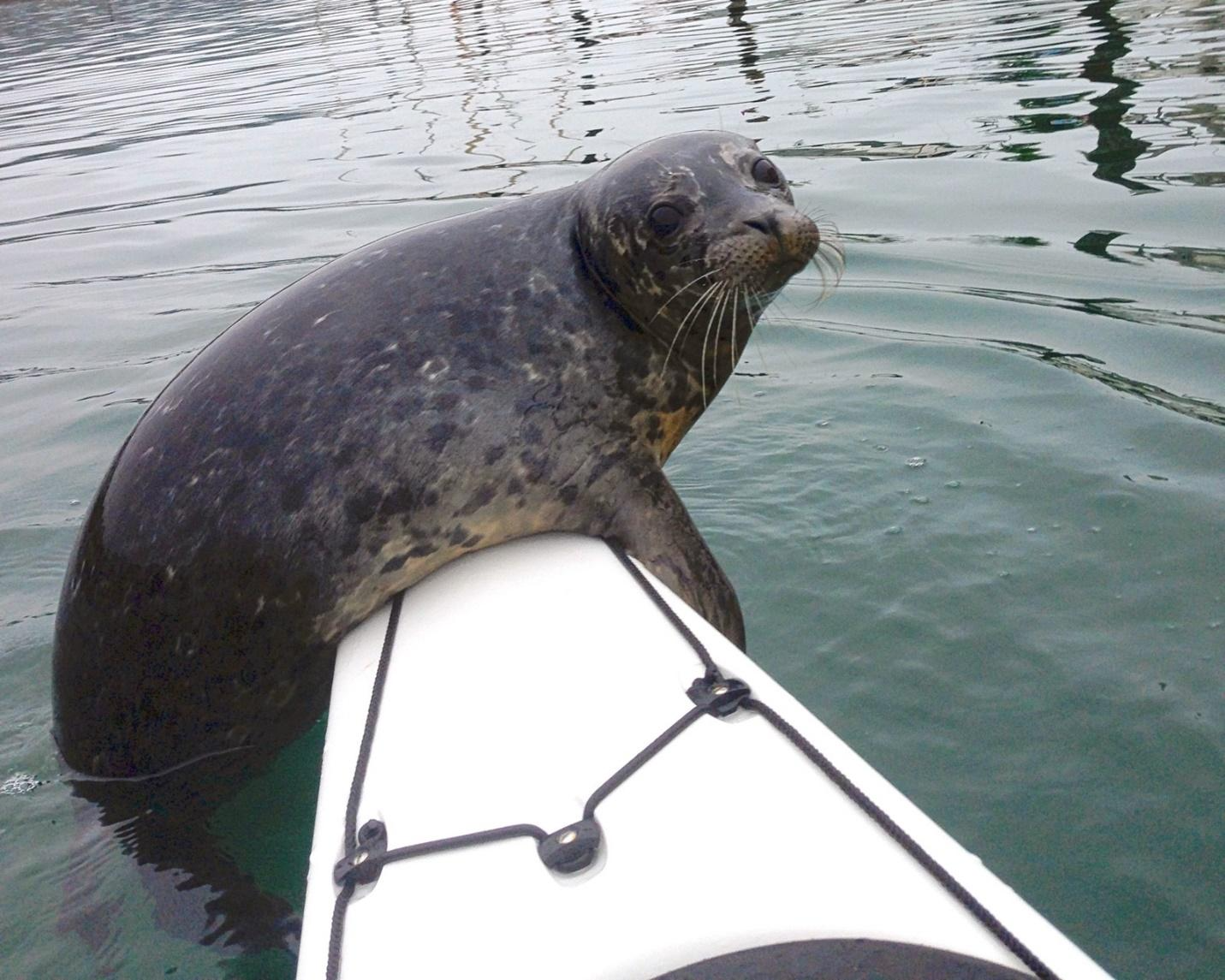
A curious harbor seal investigates a kayak. Courtesy of Megan Schorr
Additionally, four kinds of whales can be found in the area, including Orcas.
In the years that Schorr has been intimately acquainted with this marine environment, she has seen changes in wildlife populations—most notably the whales.
In the past she has had many close encounters with Southern resident killer whales. They often swam directly under her kayak—their 6-foot dorsal fin barely clearing the boat. On more than one occasion they were so close that she made eye contact with them.
Today, the Southern resident population is less likely to be seen. The salmon, which are their primary food source, are in decline and no longer travel through the area in droves as they once did.
The decline of the resident orcas has ushered in an explosion of other whales in the area. Transient orcas, which eat harbor seals, are now seen more commonly. As are Humpbacks—something that was a rare experience 25 years ago.
On the other end of the spectrum is the microflora and fauna that Schorr loves for people to engage with. She feels that it has the power to open a new world for them, one that can easily be overlooked. Guides are encouraged to linger in kelp beds and help people identify tiny creatures, such as bryozoans and cryptic nudibranchs.
All of this is in addition to the exceptional wildlife found in the intertidal zone. Fantastic sea creatures such as sea stars, urchins, chitons and sea anemones.
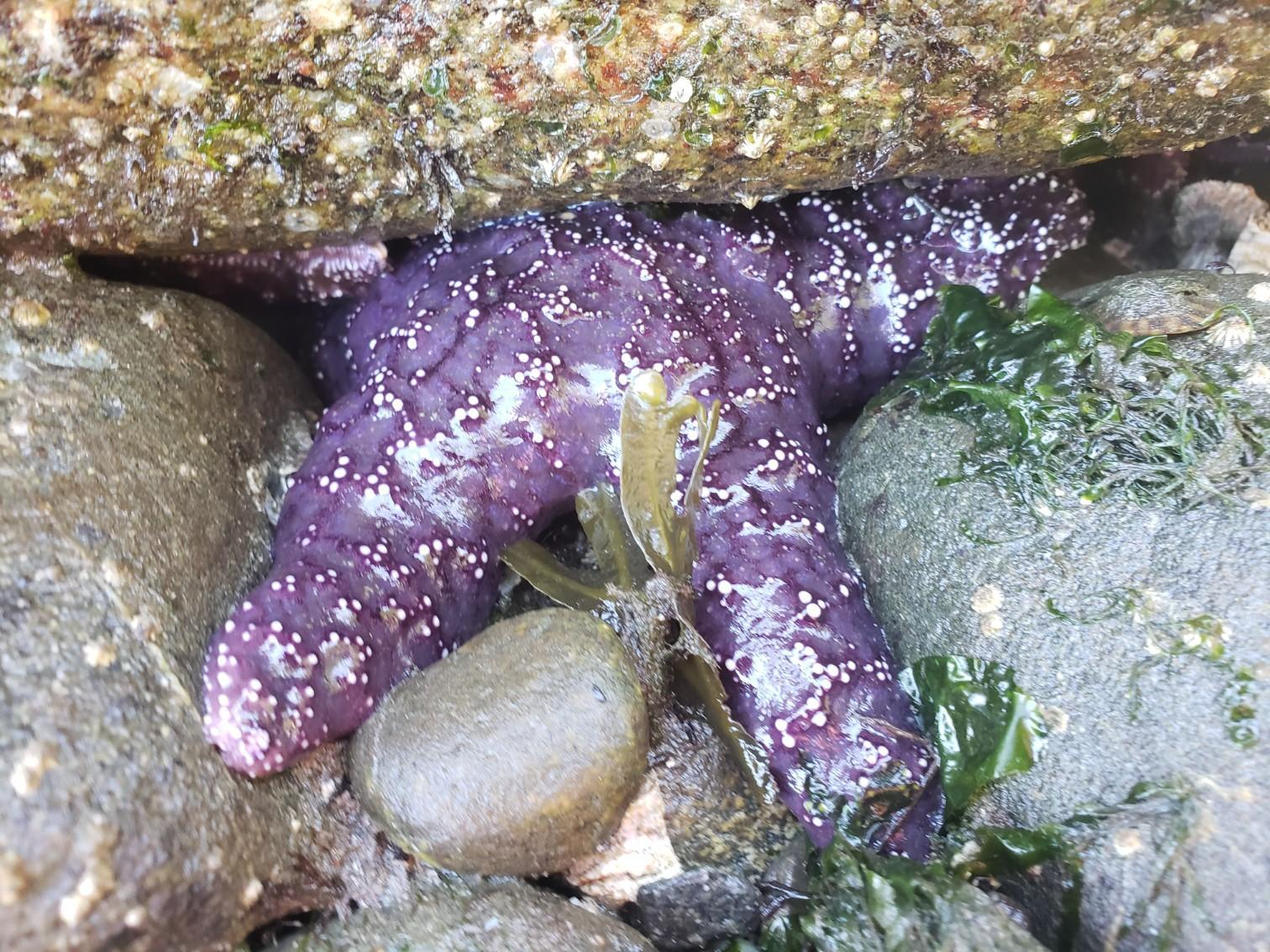
Ochre sea star peeking out of the rocks. Courtesy of Megan Schorr
The islands seem to be as varied as the wildlife that surrounds them. Guests often ask which island is Schorr’s favorite, to which she always replies, “It depends on the day.” Explaining that each has characteristics that she finds enchanting—an old schoolhouse, unique geology, significant family memories, or the feeling of being at the end of the Earth.
It is from this vantage, this end of the Earth, that Schorr sends her gratitude into the world like a flock of birds taking flight. The life she has made for herself—as an emissary for connection with and movement in the outdoors—has rewarded her with the satisfaction of knowing that she has crafted her livelihood as a natural continuation of her lifestyle.
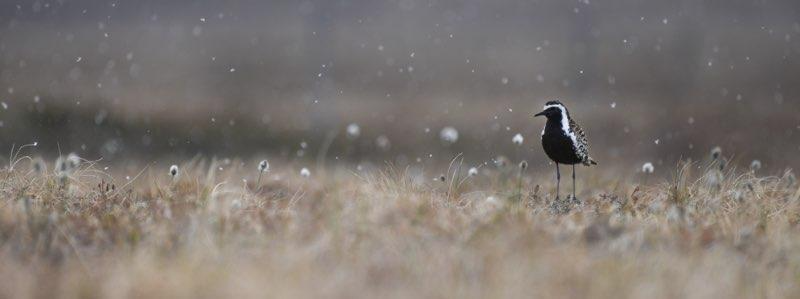
Pacific-Golden Plover | Photo by Tashi Schorr
